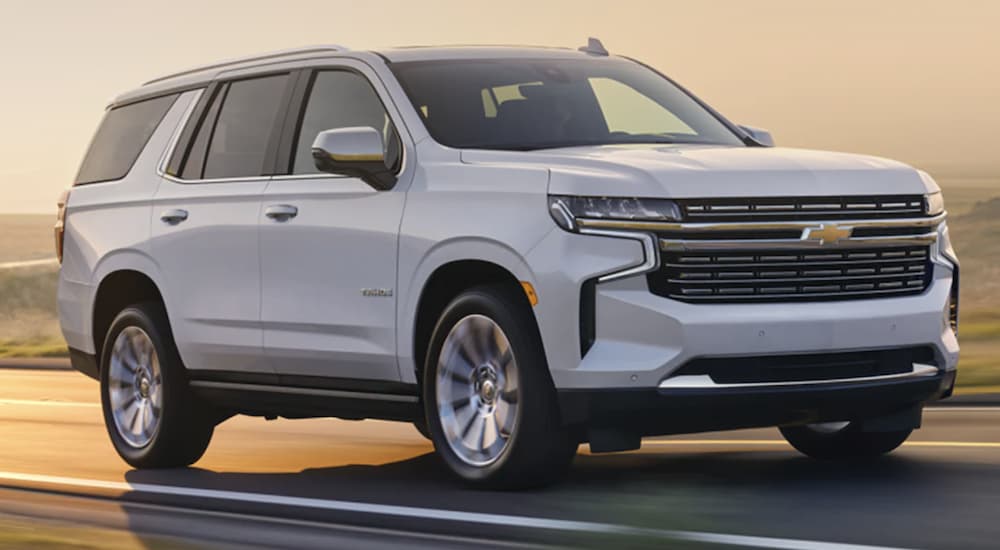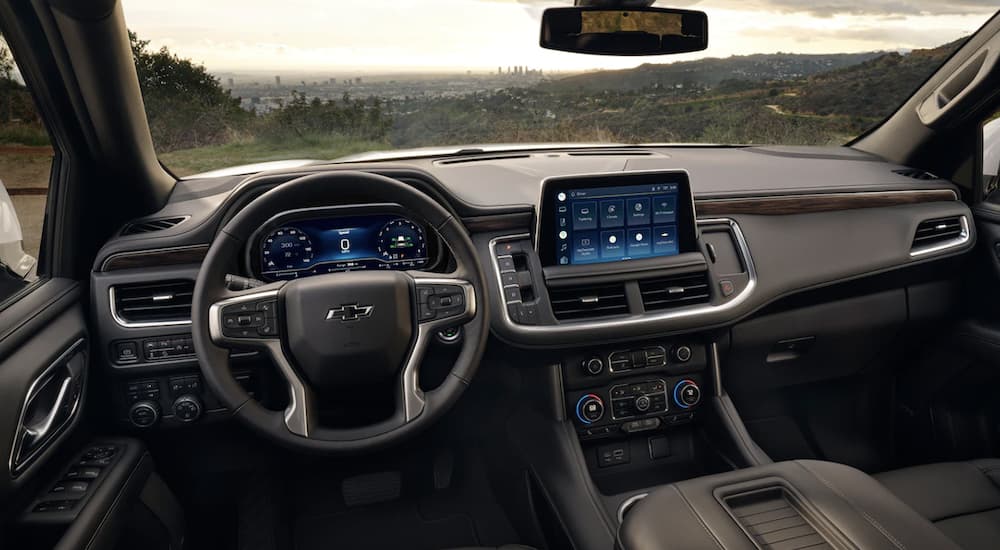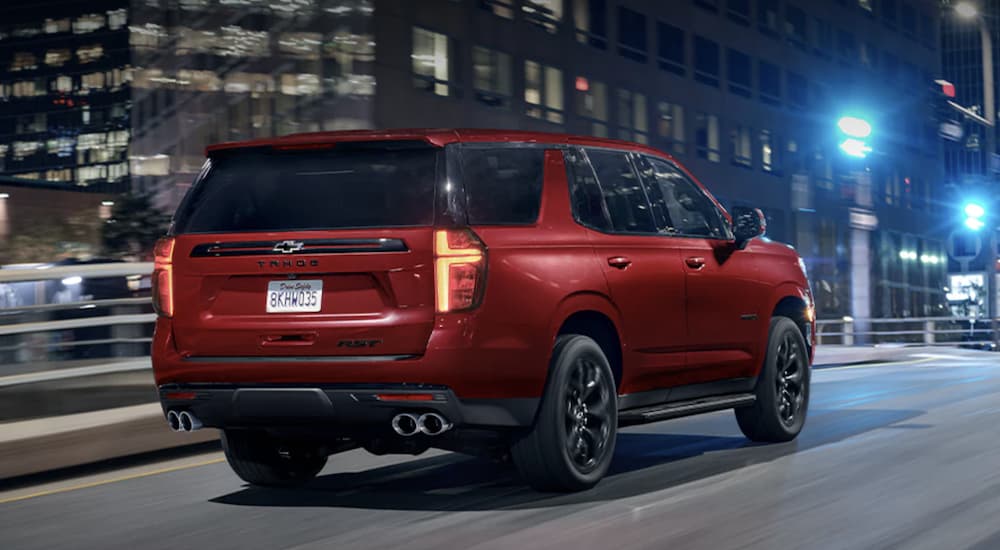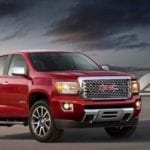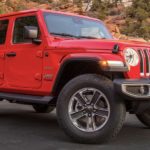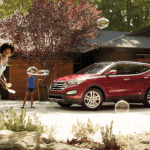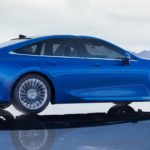Chevrolet has an advantage in the industry because its ingenuity stretches beyond its wheelhouse to the entire General Motors umbrella. As a result, when General Motors develops new features, technology, or designs, every brand under the GM banner benefits, whether it’s Cadillac, Buick, GMC, or Chevrolet. But what impact does this have on our everyday experience at dealerships across the nation, particularly when looking for a best-selling SUV like a Tahoe for sale?
Chevrolet isn’t working alone, which has its advantages, as seen in the Tahoe. General Motors has access to more funding, technology, tools, and high-level talent as a multinational automotive manufacturer. Models like the Tahoe reap the benefits of this access and make innovative technology, cutting-edge features, and next-level luxuries accessible to more drivers. This trickle-down approach and shared ingenuity take center stage on models like the 2023 Tahoe, which features General Motors’ intuitive and ingenious Magnetic Ride Control.
Magnetic Ride Control: Demystifying the Buzzword
The automotive industry is filled with buzzwords, acronyms, and jargon, so it’s no surprise that many drivers assumed Magnetic Ride Control was another name for a basic feature meant to insight oohs and ahhs from prospective buyers. However, Magnetic Ride Control is more than a fleeting trend. It’s an innovative feature that genuinely transforms how a vehicle performs, and it’s pervasive throughout the General Motors lineup, particularly in models like the Tahoe and those with the Cadillac name. It’s even a staple among non-GM brands, but more on that in a moment.
SUVs have long been known for their cumbersome performance, often handling more like land yachts and less like sophisticated cruisers. An innovator at heart, General Motors set out to change that in the early 1990s and tasked its subsidiary, the Automotive Components Group (ACG), with developing a solution. ACG eventually rebranded as Delphi Automotive Corporation and gave General Motors everything it asked for with the debut of MagneRide on the 2002 Cadillac STS Seville. Today, Magnetic Ride is manufactured by Beijing West Industries, formerly the Delphi Automotive Corporation.
So, what is it? MagneRide, known as Magnetic Ride Control on GM models, is an active suspension system that responds to the terrain in real-time. Air adaptive suspensions make the same promise of improving performance and adapting. However, they take longer to adjust and often require manual input from the driver to tell the system to change the air springs for the driving conditions. As a result, there’s minimal real-time reaction in most air ride adaptive suspensions, which gives Magnetic Ride Control a distinct advantage.
In the most basic sense, it’s like having the world’s smallest and most talented mechanic working behind the scenes to constantly adjust the position of the wheels, monitor the terrain, and control the vehicle’s body movement to actively improve performance, stability, and handling. These changes occur every few milliseconds, meaning the system reads and reacts to the road long before you notice any difference from the driver’s seat. The only input you may have to make is switching between modes like Touring or Sport, which further tailors the driving experience to your needs. Even then, the reaction is immediate and seamless.
How It Works: Putting the “Magnet” in Magnetic Ride Control
In most situations, a feature that constantly works behind the scenes sees a lot of wear and tear, often leading to frequent repairs and continual maintenance. However, General Motors ensured the Magnetic Ride Control system was designed with durability and longevity in mind. Rather than using smaller components and mechanical valves, the system relies on three essential features: sensors, an electronic control unit, and monotube dampers.
The monotube dampers are positioned at each wheel of the Tahoe and feature a piston with two electromagnetic coils and dual fluid passages that channel a unique magnetorheological fluid developed by the Lord Corporation. The fluid is a mixture of synthetic hydrocarbon oil and iron particles that are easily magnetized. While the word is a mouthful to say, the magnetorheological fluid is essential to the process because it can be magnetized at different strengths.
The Tahoe’s sensors monitor the terrain, positioning of the SUV, and any inclination of body roll every few milliseconds. This information is communicated to the electronic control unit (ECU), a computer that directs and coordinates the entire system. Once the data reaches the ECU, it determines the real-time response. So, for example, in normal conditions where adjustments aren’t needed, the magnetorheological fluid flows freely through the passages, and no magnetization or suspension adjustment occurs.
But what happens when the technology senses a change in the terrain or handling? The electromagnetic coils within the dampers activate. This forces the iron particles in the fluid to bond together, creating a fibrous structure in the passage that runs along the magnetic field. What’s unique about the Magnetic Ride Control system is that the process is entirely reversible, and the coils can adjust the thickness of the fluid many times every second. But how does this apply when you’re behind the wheel?
Everyone dreams of a soft suspension that delivers a cloud-like ride, and Magnetic Ride Control makes that possible with its innovative design. However, that soft suspension can be detrimental when navigating corners or tight turns. The Magnetic Ride Control system immediately adjusts, with the coils raising the fluid’s thickness and increasing the oil’s viscosity to stiffen the suspension and affect the damping force. The result is improved handling, stability, and performance when cornering and an immediate reversal of the effect as the conditions allow.
The Magnetic Impact: From Tahoe and Beyond
Magnetic Ride Control comes standard on the Tahoe’s top-tier trims like the Premier and High Country or as an available upgrade on the RST and Z71 in 2023. However, this innovative technology isn’t limited to the best-selling SUV and is a staple throughout the General Motors fleet. You’ll find it on popular Chevys like the Suburban, Silverado, Camaro, and Corvette. It’s also included on the Buick Lucerne CXS and Super, the GMC Sierra and Yukon, and most of the Cadillac lineup from the CT4, CT5, and CT6 to the Escalade, CTS, ELR, SRX, and ATS.
While General Motors had a hand in developing Magnetic Ride Control or MagneRide, the multinational automaker hasn’t shied away from sharing its ingenuity with other brands thanks to ongoing work with Beijing West Industries, which manufactures and improves the system. As a result, the technology is accessible to more drivers and has been a staple on models like the Shelby GT350 since 2015. Luxury SUVs like the Range Rover Evoque and Land Rover Discovery Sport also offer MagneRide, as do Audi models like the R8, the Acura MDX, the Lamborghini Aventador, and Ferraris like the California, 599, and FF.
Seeing and Appreciating the Bigger Picture
Magnetic Ride Control gives SUVs like the Tahoe and other non-GM models like the Shelby GT350 and Range Rover Evoque distinct appeal. Still, its pervasive use also means more people have access to this technology. So, how is this impactful besides giving drivers like us a better ride? With more access comes more improvement.
Since the new millennium, Magnetic Ride Control has seen numerous upgrades. With each generation, the technology has vastly improved how models like the Tahoe handle and respond to the terrain. Most notably, the exchange of the single coil design for two coils improved real-time reactivity for immediate responsiveness. This ingenuity is a direct result of the technology’s widespread use. However, it also showcases General Motors’ initial idea and the automaker’s ongoing efforts to evolve and improve its pioneering ideas, albeit with the help of others. For General Motors, this technology is designed for the industry’s greater good and to make our time on the road smoother and more enjoyable than we ever imagined.
